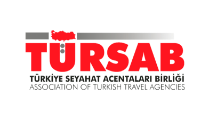16 ITEMS YOU NEED TO BUY BEFORE BREAST AUGMENTATION SURGERY FOR AN EASY, UNCOMPLICATED RECOVERY
The post-op recovery period is a delicate time, especially after breast augmentation surgery. While breast augmentation is a relatively easy and common type of plastic surgery, no recovery period is as easy as it seems. Sometimes, the key to quick recovery is all about being prepared and using hacks and gadgets that make life easier.
In this shopping guide, we gathered an extensive list of items that you might want to buy so you can have an easier time during your recovery, and not have to worry about inconveniences that might come up. We recommend you purchase these items in advance to have everything you need when you come home.
For your convenience, we prepared a shopping list you can download to your device or print out to tick items off as you buy them, so you do not lose track of anything!
Compression Garment
Immediately after your surgery, you’ll be wearing a compression support bra for 6 months. It’s a crucial item you must have during your recovery process. The support bra reduces swelling, promotes faster healing, and will help your body adjust to the implants better.
Some clinics or doctors provide garments for you right after your surgery, so make sure you check in with them in advance. If they are not providing the garment themselves, they still might have a recommended brand for patients.
If you have to get your garment on your own, make sure that you are buying a quality garment made for your size from a verified medical supplier. The price for these garments can be a little steep, but considering the fact that you’ll be wearing them constantly for months, and the healing and adjustment benefits it provides, it’s worth every penny.
Prescription Pain Medication
As the anesthesia wears off, you’ll be feeling slight pain and tenderness around your surgery site. For pain, doctors will prescribe painkillers that are highly effective. We recommend you get these prescription medications in advance so you do not have to deal with going to the pharmacy after surgery. You can also consult your doctor about which over-the-counter painkillers are safe to use for you after the surgery.
Bandages and Gauze
Before you leave the hospital, the nurses will inform you on how you can change your wound dressing at home. Changing your wound dressing is crucial, as your stitches need to stay dry and clean for proper healing and to prevent infection.
Some clinics might provide the gauze and bandages you need, and some might not. We recommend you stock up on gauze, bandages, and the type of antiseptic your doctor recommends so you will have all the supplies you need to keep your wound sanitary.
Scar Healing Ointment
While breast augmentation scars heal really well most of the time, you might want a little extra help. Once your wound is completely healed, you can use a scar healing ointment. These type of product comes in various forms like gel, cream, or serum, and they are meant to speed up the healing process and prevent any discoloration, or bumps. This type of product needs to be applied daily to be effective.
It’s extremely important that you use this type of product after your wound completely heals. You shouldn’t be putting anything on your stitches or open wounds without your doctor’s clearance. You can ask your doctor about which scar ointment they recommend, and when you should start using it.
Antibacterial Soap
After breast augmentation, you’ll have to wait for a while before you can take a shower. And when you do, it’s best to use an antibacterial soap to clean around your stitches. Using a regular bar of soap, or a shower gel can be dangerous because these products are prone to harboring bacteria, which can cause infections.
We recommend that you use liquid antibacterial soap for sanitary purposes. If your only option is a bar, make sure that you leave it in a cool and dry place. You can ask your plastic surgeon and nurses about their recommended antibacterial soap.
Ice Packs
After surgery, you’ll experience swelling and heat in your breast area, and applying cold compress with an icepack can both help with the swelling and the uncomfortable sensation. We recommend either a good-old bag of peas from your freezer, or you can use a fancy, reusable gel ice pack, which is more appropriate.
Do not forget to consult your surgeon about when can you start using ice packs, how many times a day you can use them, and how long. Never apply a cold compress directly onto your skin without some sort of cloth over the ice pack.
Heating Pad
While the cold compress helps with swelling, heat will help with general muscle stiffness, which you can experience on your back and shoulders after the surgery. A heating pad is a great way to help with that uncomfortable feeling. We recommend you use stick-on heating pads on your back or shoulders for convenience.
Never wear heating pads more than a few hours at a time, and do not apply them close to your breast area, or stitches.
Toiletries
You won’t be able to shower for one or two days after surgery. Even after that, you’ll be on bed rest until you feel well. We recommend that you buy some toiletries in advance and store them on your nightstand for easy access.
Especially during the recovery process, it’s essential to still feel refreshed. Stock up on dry shampoo, baby wipes, toothpaste, and mouthwash so you do not have to exert yourself too much for these activities.
Laxatives
Constipation can be a side effect of anesthesia and pain medications or both. It can be difficult to get a bowel movement after the surgery, which can cause a lot of discomfort.
Now, laxatives can be helpful but also dangerous. Especially at a time when your body is delicate and healing, it’s not a good idea to use too many laxative products. You should consult your doctor or pharmacist and ask which laxatives are safe for you to use, and the proper dosage. Do not use laxatives unless they are absolutely necessary for a bowel movement.
Clothing
After surgery, it will be a little difficult to exert your arms, which can make dressing on your own a little difficult. And not everyone will have a friend or a family member that can help them dress every day. So, comfortable and loose clothing is essential.
For convenience, we recommend you get a few flowy and loose button-ups after surgery. They will make dressing by yourself so much easier, especially if lifting your arms is a little painful. Wearing button-ups for your post-surgery visits will also make it less complicated for your plastic surgeon to check on your wounds. Also, make sure you have some comfortable bottoms like joggers you can wear easily, and a zip-up hoodie to wear over your button-ups for warmth.
Footwear
Comfortable shoes are also a must, as bending down to put shoes on can be a little strenuous as it puts a lot of pressure on your chest. We recommend you get some comfortable shoes you can easily put on and take off without bending down.
You can opt for slippers and slides for the most convenient option. If you’d like something a bit more elevated, we recommend getting slip-on sneakers, mules, or loafers.
Pillow
After your surgery, you will have to sleep on your back, which might be hard to get used to, especially if you’re a back or stomach sleeper. Sleeping on your back will help with the swelling, and will avoid any mishaps that can damage your results.
We recommend you get enough pillows so you can sleep comfortably through the night, without rolling over or falling down from your bed. You can also check out elevated wedge pillows.
Food
Having healthy foods and snacks will help you tons during the recovery process. However, cooking after surgery will be difficult.
We recommend you prepare your food in advance, and stock up on some healthy ready-to-make items. Meal prep is a great option if you have the time to prepare in advance. We also recommend ready and washed salad mixes. Also, stock up on healthy juices and smoothies for your daily portion of fruits so you do not have to rely only on supplements for vitamins and minerals.
It’s best to avoid ready-to-make or take-out items like convenience meals, or canned soups as they include a lot of sodium, which will make the swelling worse.
Straws
After surgery, you need to drink plenty of water, juices, and smoothies to get your nutrients easily and reduce swelling. We know that drinking a cup of water can seem like the simplest thing in the world, but trust us, after surgery, you won’t want to raise your arms for a little while.
You can buy some straws in advance, which will make it easier to drink anything when you’re recovering and can’t exert yourself too much. We would love to recommend some sort of metal, silicone, paper, or glass straw after surgery, but plastic straws are the best option as they are highly bendable and do not require cleaning.
Reach Extender
Reach extenders are a great tool to help the elderly and the disabled with independence. They can take a little while to get used to, but they will be so convenient during the recovery process. With reach extenders, you can pick up items without lifting your arms or bending down and avoid putting extra stress on your chest muscles and limbs.
Phone Stand
We are inseparable from our phoned and devices. While today we would feel empty without our phones in our hands, it might not be such a good idea during recovery.
We recommend you get a stand for your devices, your mobile phone, tablet, or laptop so you do not have to carry it around in your hand all day, or don’t have to sit with a bad posture when you’re using them, which puts extra stress on your arms and back, even if you don’t notice it.
Final Word
Recovery is never easy, from any surgery. We believed that preparing in advance is the best way to make recovery as easy and as seamless as possible. We hope that this shopping list was useful for you and that we were able to provide some recommendations you haven’t thought of for your breast augmentation recovery. In short:
- Preparing in advance is the best way to make your healing and recovery process super easy.
- You should have your medical and sanitary supplies on hand and consult with your doctor in advance to make sure you’ll have everything you need.
- Having comfortable clothing, and some convenience items will help you not to exert yourself too much for simple daily activities.
- Having your food prepared in advance, and with items that will make it convenient to consume it will help with getting all your nutritional needs covered without putting too much stress on your body.
Do not forget to download our shopping list so you can keep track of your purchases. Have a nice recovery!






